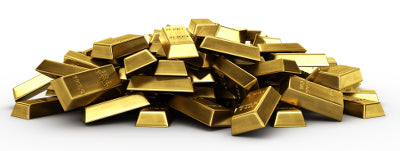
The refinery and its role in gold purchasing
A refinery forms the interface between the gold purchasing company and the process of further processing the precious metal. The purchased gold in the form of dental gold, scrap gold or old gold is brought to the refinery, where the purity of the precious metal can be determined quite precisely with the help of special software. In contrast to the refinery, the gold buyer can usually only estimate an approximate value of the gold with the help of a sample. After estimating the gold content, the gold is separated from foreign materials in the refinery and formed into either gold bars or gold granules.
The refinery – the decomposition of gold alloys
The old gold is melted down in the refinery by heating it to high temperatures, which burns off any impurities. The resulting ash is sucked off using a special device. The use of technical innovations makes it possible to filter out the pollutants produced, thus keeping the negative impact on the environment as low as possible. The refinery then separates the fine gold from its alloying partners. The different melting behavior of the various metal components of the alloy is used for this. However, it is not possible to obtain gold with a fineness of 100%, which is why gold bars usually have the number 999.9 (equivalent to 99.99%).
Renowned refineries
The refinery with the longest history in Germany is the Heimerle + Meule refinery in Pforzheim, founded in 1845. In addition, Heraeus Holding GmbH has existed in Hanau since 1851, as has the Degussa refinery in Pforzheim, founded in 1871.
One of the most important refineries in the world is the Germiston Refinery, which is located near the South African city of Johannesburg.

